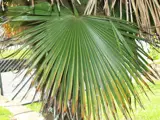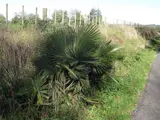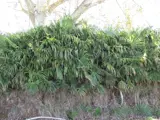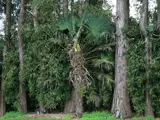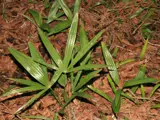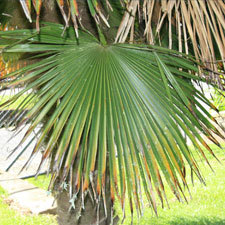 Chinese fan / windmill palm
Chinese fan / windmill palm
Common name: Chinese fan / windmill palm
Botanical name: Trachycarpus fortunei
Management programme: Sustained control - Rule 5a applies
Originates in China and introduced to New Zealand as an ornamental plant. It was naturalised in 1959.
Why is it a pest?
- It has the potential to threaten native bush and riparian areas, forming tall stands which compete with native species.
- Widely planted as an ornamental plant so has a large potential seed source.
- Tolerant of drought and cold, and poor nutrient soils.
Where is it found?
It is widespread in coastal Bay of Plenty. Invades disturbed forests, and forest margins, river and stream edges and wetlands. The palm produces prolific seeds which are spread by birds and also drop to the ground.
What does it look like?
- Chinese fan / windmill palm is a tree with a single straight trunk without branches.
- Dead leaves hang from top of the trunk, forming a skirt.
- Upper trunk is covered with remains of old leaf stalk bases.
- Lower, mature trunk develops lumpy ringed bark.
- Leaves are round fan-shaped, and divided into narrow, pleated leaflets that droop at the tips. Leaf stalks are long (about 1m) with stout, sharp teeth along the margins.
- Many small yellow flowers are held on a large, branched, and drooping spike from November to January.
- Small slightly flattened yellow berries follow in March and ripen to blue-black.
- It is a large, long-lived tree that is hardy, and fast-growing.
What are the rules?
Sustained control
Sustained Control pests are well established in the region and preventing the spread is no longer a realistic objective. Management focuses on reducing general impacts of the pest. Landowners/occupiers are responsible for the control of these pest species on their land. Council may enforce control.
Under rule 5a of the RPMP landowners/occupiers must destroy this pest if required by a written direction from an authorised person unless a property specific pest management agreement has been agreed and signed between the occupier and the Council.
Criteria to meet Rule 5A include when the species is being actively managed by council, other agency and or community group, on an adjacent property. See the Regional Pest Management Plan 2020-2030 rules for Sustained control pests for more information.
How do you get rid of it?
Recommended:
- Dig out seedlings and small plants.
- Cut and stump treatment with herbicide.
- Stem inject every 20cm around the trunk with herbicide (all year round).
CAUTION: When using any herbicide or pesticide, PLEASE READ THE LABEL THOROUGHLY to ensure that all instructions and directions for the purchase, use and storage of the product, are followed and adhered to.
Read more on pest control advice, information and regulations.
Images

